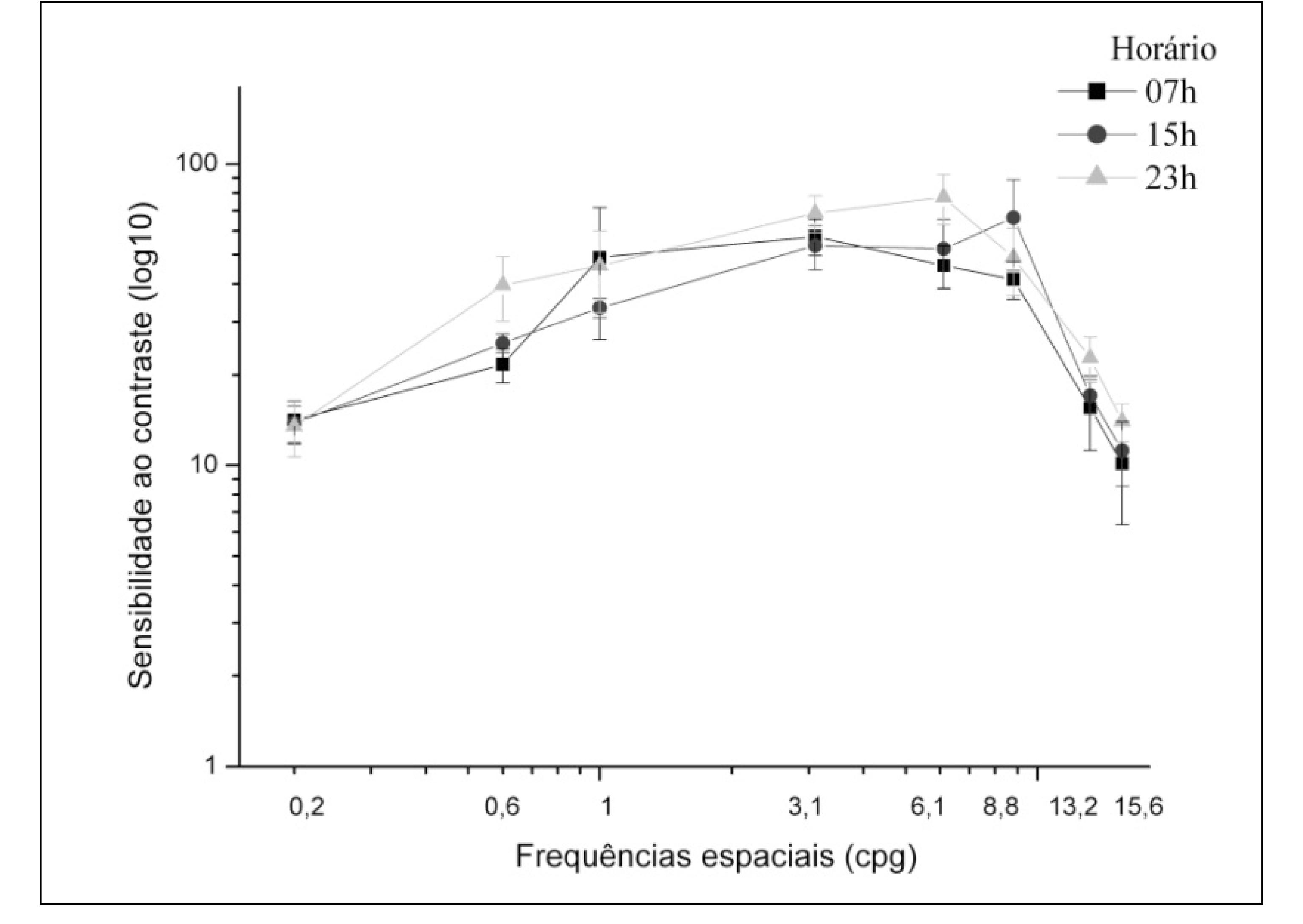This study aimed to evaluate the contrast sensitivity curve for the stimuli of vertical sinusoidal grids with spatial frequencies of .2; .6; 1; 3.1; 6.1; 8.8; 13.2 and 15.6 cycles per degree of visual angle, in a 24- hour rhythm of healthy adults of different chronotypes. This study had 18 participants aged 19 to 31 years (M=23.8; SD=3.29) divided into groups according to the chronotype: Morningness (n=5), Intermediate (n=9) and Moderate Eveningness (n=4). Neuropsychological measures and the Metropsis software were used to evaluate the Contrast Sensitivity Function (CSF). CSF measurements were performed by the psychophysical method of forced choice between two spatial alternatives. Results showed significant changes in the dimensions related to cognitive processing and CSF for morning subjects [F (14; 76303) = 38.92; p < .05], Intermediate subjects [F (14, 505) = 2.79; p< .05] and moderately evening subjects [F (14, 279) = 2.75; p< .05] in accordance with the measured time. The study concluded that contrast sensitivity is an important aspect to the study of circadian visual perception, suggesting that the sensorial mechanisms which process visual contrast are directly related to the time and pattern of people's chronotypes.
Psychophysics; contrast sensitivity; circadian rhythm; chronotype



